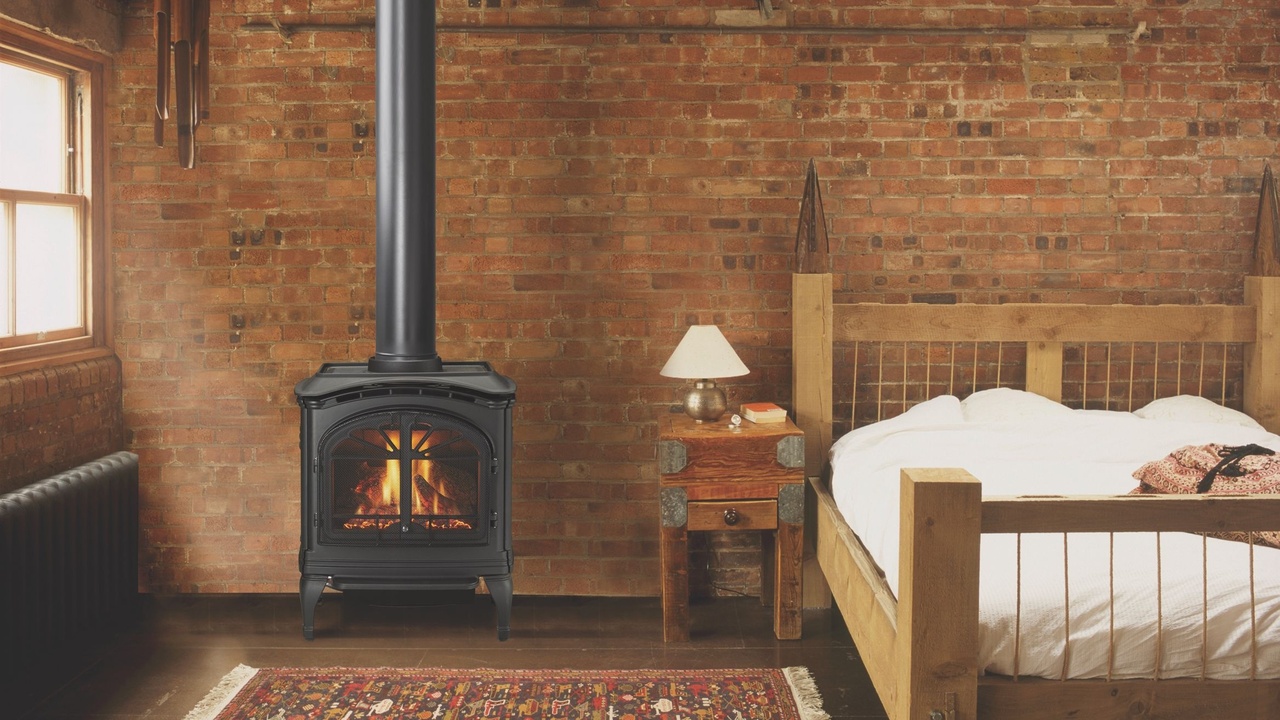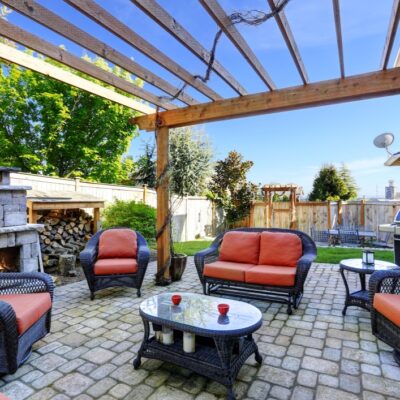
When it comes to wood burning fireplaces, there are two general approaches to meeting the EPA smoke emission limits: non-catalytic and catalytic combustion. Both approaches have proved effective, but there are performance differences.
Non-catalytic products do not use a catalyst, but have three internal characteristics that create a good environment for complete combustion. These are firebox insulation, a large baffle to produce a longer, hotter gas flow path, and pre-heated combustion air introduced through small holes above the fuel in the firebox. The baffle and some other internal parts of a non-catalytic stove will need replacement from time to time.
Pros of Non-Catalytic Stoves
-
Simplicity:
- Non-catalytic stoves, without the added component of a catalyst, are often simpler to use and understand, especially for novices. This makes them user-friendly and easy to operate for those new to wood stoves.
- Non-catalytic stoves, without the added component of a catalyst, are often simpler to use and understand, especially for novices. This makes them user-friendly and easy to operate for those new to wood stoves.
-
Durability:
- With fewer parts that can degrade over time, non-catalytic stoves may have a longer lifespan and require less frequent maintenance. The simpler design means fewer components to worry about, which can be a significant advantage in the long run.
- With fewer parts that can degrade over time, non-catalytic stoves may have a longer lifespan and require less frequent maintenance. The simpler design means fewer components to worry about, which can be a significant advantage in the long run.
-
Ambiance:
- Many homeowners prefer the flame pattern and overall look of a non-catalytic stove, praising its authentic and traditional wood-burning appearance. This aesthetic appeal can enhance the ambiance of any living space, making it a popular choice for home decor.
- Many homeowners prefer the flame pattern and overall look of a non-catalytic stove, praising its authentic and traditional wood-burning appearance. This aesthetic appeal can enhance the ambiance of any living space, making it a popular choice for home decor.
Technical Advantages
-
Firebox Insulation:
- The firebox insulation helps maintain high temperatures inside the stove, ensuring efficient combustion and better heat output.
- The firebox insulation helps maintain high temperatures inside the stove, ensuring efficient combustion and better heat output.
-
Large Baffle:
- The large baffle creates a longer and hotter gas flow path, which promotes complete combustion. This not only improves efficiency but also reduces emissions.
- The large baffle creates a longer and hotter gas flow path, which promotes complete combustion. This not only improves efficiency but also reduces emissions.
-
Pre-heated Combustion Air:
- Introducing pre-heated combustion air through small holes above the fuel in the firebox further aids in achieving complete combustion. This feature contributes to the stove’s overall efficiency and performance.
In summary, non-catalytic wood stoves offer a blend of simplicity, durability, and aesthetic appeal, along with technical features that ensure efficient combustion. This makes them an excellent choice for those seeking a reliable and visually pleasing heating solution.
In catalytic combustion, the smoky exhaust is passed through a coated ceramic honeycomb inside the products where the smoke gases and particles ignite and burn. All catalytic products have a lever-operated catalyst bypass damper which is opened for starting and reloading. The catalytic honeycomb degrades over time and must be replaced, but its durability is largely determined by the operator. The catalyst can last more than six seasons if the stove is used properly; but if the stove is over-fired by using inappropriate fuel, or if regular cleaning and maintenance is not done, the catalyst may break down in as little as 2 years. Garbage or treated lumber should never be burned in a wood stove, insert or fireplace.
Benefits of Catalytic Wood Stoves:
- More Heat: Catalytic wood stoves extract more heat from the wood, meaning your room gets warmer without using extra logs. This efficiency ensures you get maximum warmth for your fuel.
- Cleaner Air: By burning the smoke a second time, fewer pollutants are released into the atmosphere. This process significantly reduces the amount of smoke and harmful particles that exit through the chimney, making it an environmentally friendly option.
- Efficiency and Longevity: Proper use and maintenance of the catalytic component can extend its life to over six seasons, giving you long-term efficiency and value. Neglecting maintenance or using improper fuel can shorten this lifespan, so it’s crucial to follow proper usage guidelines.
In simple terms, catalytic wood stoves give you more warmth for your wood and are kinder to the environment. They not only enhance heating efficiency but also contribute to cleaner air, making them a smart choice for eco-conscious homeowners.
Which is Better, a Catalytic or Non-Catalytic Wood Stove?
Choosing between a catalytic and a non-catalytic wood stove depends on your specific needs and preferences. Let’s dive into the benefits of each type to help you make an informed decision.
Catalytic Wood Stove
For Maximum Efficiency:
- Heat Output: Catalytic stoves are known for their high efficiency. They maximize heat output by using a catalytic combustor to ignite smoke and produce a longer and more even burn.
- Burn Time: These stoves are designed to burn wood more completely, resulting in longer burn times per load of wood.
- Fuel Usage: If you’re looking to get the most heat from the least amount of wood, a catalytic stove is your ideal choice.
Non-Catalytic Wood Stove
For Simplicity and Tradition:
- Ease of Use: Non-catalytic stoves are typically easier to operate. There’s no need to worry about maintaining a catalytic combustor.
- Low Maintenance: These stoves require less meticulous maintenance, making them perfect for those who prefer a traditional wood-burning experience without the hassle.
- Immediate Heat: Non-catalytic stoves are known for delivering quick heat since they don’t rely on a catalytic process.
Making the Right Choice
Both options have their unique advantages, and the best choice boils down to your lifestyle and heating needs.
- Efficiency Lovers: If efficiency and fuel economy are your top priorities, a catalytic stove is a great investment.
- Ease and Tradition: For those who value simplicity and a straightforward wood-burning experience, go with a non-catalytic stove.
Whichever type you choose, both promise the cozy warmth and comforting ambiance that only a wood stove can provide. Consider your heating goals and maintenance willingness to find the perfect fit for your home.




